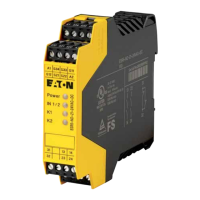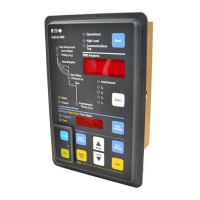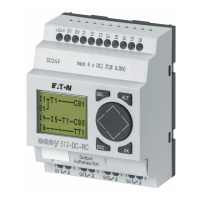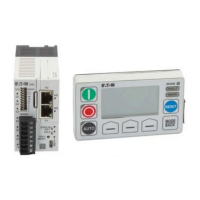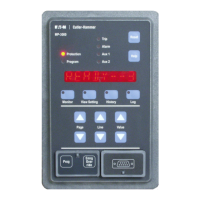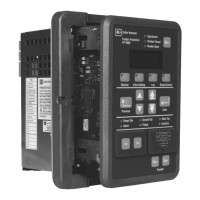I.B. 17555C
Effective November 1999
Page 36
Fig. 5-2 Digitrip 3000 Protective Dimensions (Inches)
5-4 WIRING
The wiring of the Digitrip 3000 Protective Relay must fol-
low a suitable “Wiring plan drawing.” The term wiring
plan, as used here, refers to the drawings made for the
specific application. It describes all electrical connections
between the Digitrip 3000 and external equipment. This
drawing is made by the user. It may also be helpful to
refer to the relay’s specific wiring diagram shown in Fig-
ure 3-1. An example of a typical wiring plan is shown in
Figure 2-1. Note the following:
1. The wires to the terminal blocks must not be larger
than AWG No. 14. Larger wire will not connect prop-
erly to the terminal block. However, larger size wires
can be used for the CT connections, with appropriate
ring terminal.
2. The terminal block has No. 6-32 sems pressure sad-
dle screws.
3. All contacts are shown in their de-energized position.
Note that the Protection Off Alarm Relay is energized
when control power is applied.
4. The Digitrip 3000 comes with zone interlocking jump-
ers installed (TB1 Terminals 11 to 12 and 13 to 14).
Depending on the application of zone interlocking,
these jumpers may have to be removed.
Note: Refer to the Specifications and Test Summary
for proper power supply input requirements.
All wiring must conform to applicable federal, state and
local codes.
5-5 INITIAL STARTUP
The information here is intended to be used when first
applying control power to the Digitrip 3000 Protective
Relay.
5-5.1 BEFORE POWER APPLICATION
a) Verify that all wiring is correct, as shown on the wiring
plan drawing.
b) Set the DIP switches per Table 5.1 to configure the
Digitrip 3000.
5-5.2 INITIAL POWER APPLICATION
a) Apply control power to the Digitrip 3000 Protective
Relay. Refer to Paragraph 3-2 entitled “Power-up And
Self Testing.”
b) Insure that the Operational LED on the front of the
relay is blinking green.

